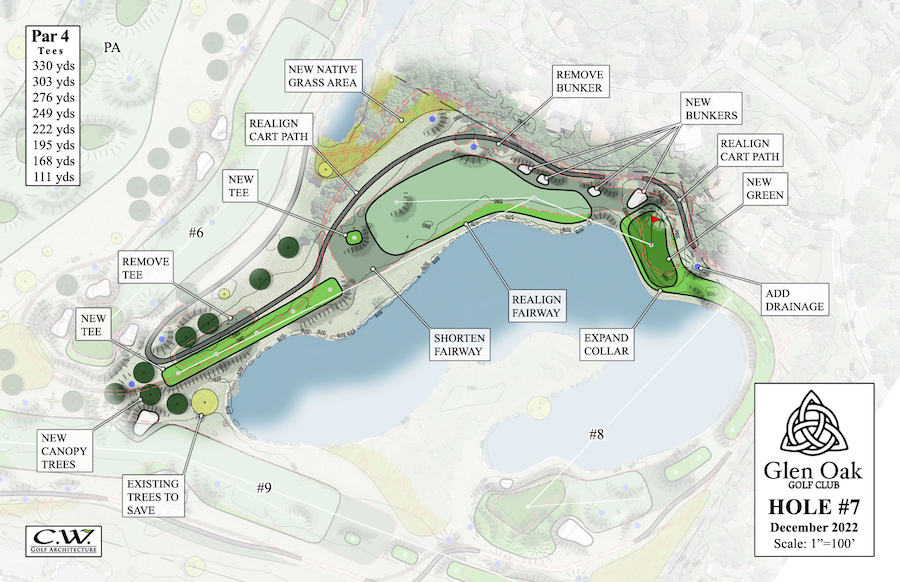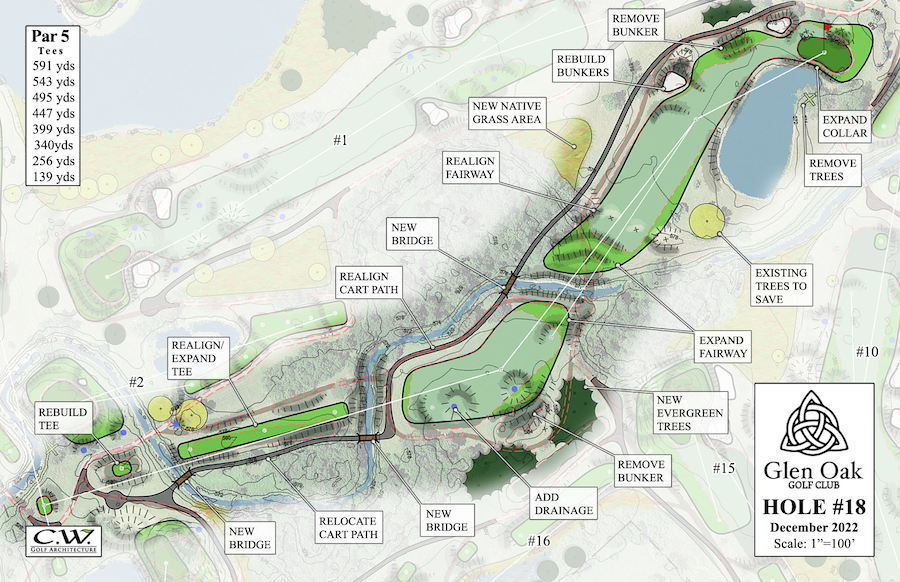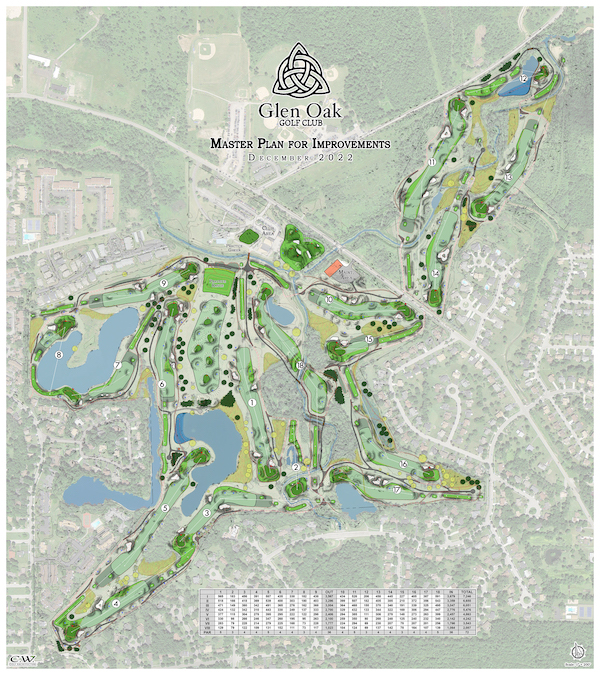EAST AMHERST, NY – Glen Oak Golf Club of East Amherst, NY has adopted a new master plan for its 18-hole championship course, originally designed by Robert Trent Jones Sr. in 1969.
The new plan, developed by Chris Wilczynski of C.W. Golf Architecture, was approved in December 2022 by club owner Tim Fries, former Golf Professional at Transit Valley Country Club. Fries has been the owner and operator of Glen Oak since 2018.
“Over the years, the course has lost many of its RTJ traits and Chris’ plan strikes an excellent balance between the need for enhancing and updating the course aesthetics and infrastructure while keeping the original design intact,” said Fries. “It’s been a fun experience working with Chris to develop this plan, and I’m hopeful we can bring it to life in the near future,” he added.
The first priority of the plan calls for the clearing of several trees to restore the playing corridors and strategic elements of the original design. The addition of several acres of wetlands and native grass areas are proposed to diversify the environmental habitat and enhance the natural beauty of the property. “Every hole sits within its own enclave while various creeks and lakes meander throughout the property which gives the course a true sense of place,” said Wilczynski. “These environmental features enhance the beauty, challenge and strategy of each hole, creating many interesting risk/reward features,” he said.

Another high priority is to improve the drainage infrastructure throughout the property so that the course can withstand the wet periods and remain open for play during the spring and fall shoulder golfing seasons. “The property is relatively flat and when it was first constructed the course relied on drainage ditches and swales to move the water,” stated Wilczynski. “We have proposed the addition of drainage pipe and catch basins to move the water more efficiently,” he added.
An overhaul of the bunkers is also at the top of the list. “The bunkers have not been rebuilt since they were originally constructed and as a result, they have significantly deteriorated lending to poor drainage and aesthetics. “We also want to reposition most of the fairway bunkers to add more challenge and interest,” said Wilczynski. “Most of the fairway bunkers lie too close to the teeing areas and are easily carried by today’s skilled golfer,” he added.
Many of the green complexes will also be enhanced. Apart from rebuilding #7, #12, #15, and #17 greens, the plan calls for expanding the remaining greens back to their original sizes and shapes. “The RTJ greens feature interesting wings that create challenging pin locations,” Wilczynski said. “We want to maintain those qualities as they are part of the original design.”
A new tee system including 7 sets of tees would provide options for golfers of all abilities by scaling the golf course from over 7,200 to under 3,500 yards. “We used the Longleaf Tee System as the model for the new tee system and even proposed the addition of a short tee that would give players an option to play every hole as a par 3,” Wilczynski said. “The short tee would be accessible from the cart path so that the course can be played outside of the traditional golf season in Buffalo.”

During Wilczynski’s assessment of the property, it was evident that the course needed a more dynamic practice facility. In addition to improvements of the practice range, his plan also highlights a new 25,000 sf putting green that would be adjacent to the clubhouse and a state-of-the-art short game complex featuring 3 greens set at different angles and elevations and accentuated by several bunkers. The short game complex will be located on an unused section of the property near the club facility.
The Glen Oak master plan will be a phased and calculated renovation with the goal of completing the highest priority improvements first. “My client now has a vision and roadmap to improve his golf facility while doing so in a manner that can be completed as the financial resources become available,” said Wilczynski. “The master plan is a valuable tool that every golf facility should have to guide course improvements and remain competitive in the marketplace.”
 About C.W. Golf Architecture
About C.W. Golf Architecture
C.W. Golf Architecture, located in Saline, Michigan, was formed in 2010 by Chris Wilczynski, an active member of the American Society of Golf Course Architects. The boutique firm specializes in a wide range of services including the master planning and renovation of existing, private and public golf courses and the design and development of new golf courses and practice facilities. C.W. Golf Architecture is dedicated to creating unique and sustainable design solutions that captivate golfers, enhance playability, and provide enjoyment and social benefits to communities throughout North America. For more information, please visit www.cwgolfarch.com or contact Chris Wilczynski at (734) 395-7941.




